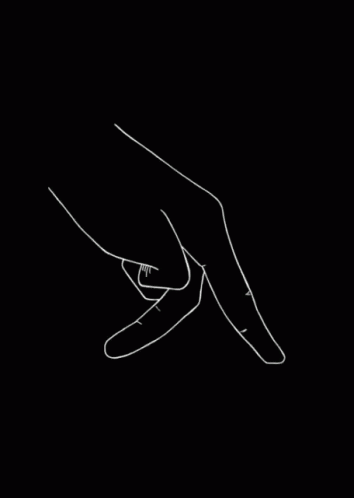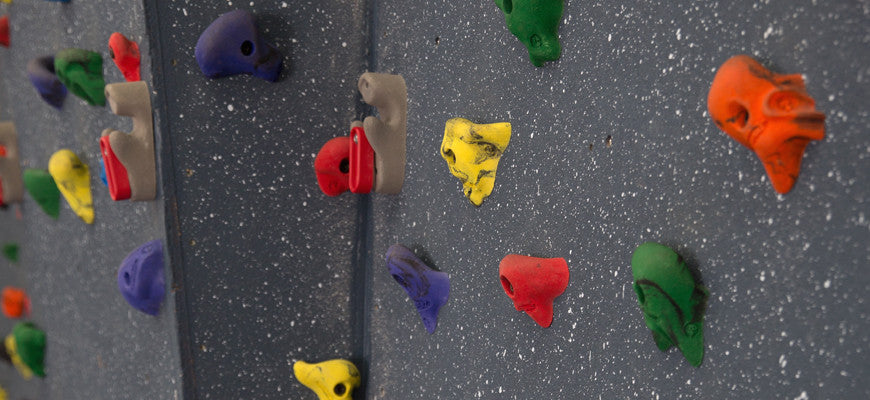Güney27 wrote: ↑Sat Oct 15, 2022 11:01 pm
What then is the difference between concepts and words?
A word in this case is the sound perception. Think about hearing a word in a foreign language. Then you have a sound perception but no concept, no intuition of what it means. Think about a word in different languages, for example ‘a lion’. We can imagine the written words or a drawing, or even the perception of a real lion. Try to introspect what is
common in all these cases. Clearly it is not the perception – that is different in all cases. What is common is the invisible meaning which lives in us as an implicit intuition that we
know what these perceptions are about.
This is probably the hardest part to grasp about PoF. Through the inertia of our abstract intellectual habits, one tries to see the concept, the idea as something in front of them, as some content of consciousness. But the meaningful essence of our being is really like the invisible intuitive
background of consciousness. Words, images and so on reflect (symbolize) that meaning.
Imagine that you are to describe your home to a friend. You have a spatial image of your home and you describe it as you would describe the contents of a painting. This is relatively easy because you can hold the spatial image of your home as something holistic, which you break down in parts (rooms, furniture, etc.) and describe them. But imagine you’re recounting a movie or a book to a friend. Obviously the story is too vast to fit in a single thought or image. This story doesn’t exist as some spatial picture that we can encompass in the same way we can do our home. Yet it still exists as a kind of landscape of meaning. We can break it down into chapters, scenes. Depending on the book/movie these may not be simply sensory happenings, there might be soul life, philosophy and so on.
The key thing is to introspect what the book/movie is
for our conscious life. Or it may not be a book, it may be some knowledge, for example using a computer to get on the Internet and write on a forum. All these things are in a certain sense ‘larger’ than anything we experience at any point of our momentary conscious life. Yet we feel certain
orientation within them. At home we have spatial awareness. If the ‘pixels’ of my consciousness present me with the view of my living room, I know how to employ my will ‘buttons’ in order to transform the view to that of the bathroom. I feel myself to be spatially oriented in my home. It is similar when we recount a movie or when we describe some knowledge. We feel certain intuitive orientation within the landscape of meaning.
Seen in this way, a concept is like a well defined
landmark of the invisible landscape of intuition. When we’re hiking we use such landmarks – the strange shape of that rock or a tree – to give us points of support within the landscape. In the previous post I likened these to climbing holds.
The most difficult thing is to overcome the tendency to
reduce the real and invisible intuitive landscape to symbols and then imagine that we can have satisfactory understanding of reality by simply manipulating the symbols.
Güney27 wrote: ↑Sat Oct 15, 2022 11:01 pm
,,And here's the key part – when we do that, we also see the concept of 'plant growth' as a symbol precipitating from inner Cosmic spiritual life, just like it is for walking. ,,
So this concept did not come about through my mental activity like that of walking but from the spiritual cosmos?
No, it came from your own observation but in this sense it exists as a Maya picture. You see some green stuff increasing in size, unfolding leaves. You’ll have similar perceptions even if you see a computer generated animation. Yet these images have spiritual background. In the latter case the artist worked with the software, in the former we’re invited to seek the Cosmic spiritual processes that live behind the growth processes. Initially we develop the concept of ‘plant growth’ as something abstract, as a label for sensory phenomena. But this concept is at the same time a
point of contact with the true spiritual forces behind plant growth. Our naive purely sensory concept won’t be thrown away and replaced with something completely different but will instead become a receptacle within which higher forces will flow and expand it. Then when we look at sensory plant growth we’ll still have our sensory concept but it will be deepened into Cosmic happenings which complement it and make it comprehensible in a much wider context.
Güney27 wrote: ↑Sat Oct 15, 2022 11:01 pm
I still don't understand why our thinking is called an organ of perception. When we condense our perception into gestures, thinking (concepts) is something we add to the world.
Actually, as I have often mentioned, materialists are in a much better position to understand this. People with superficial spiritual understanding are much more likely to take their inner being as some apex pure consciousness that demands no deeper investigation. On the other hand materialists see consciousness only as the ‘pixels’, the final output of deeper physical processing. Of course, it has been long known that there are no ‘pixel neurons’ which some ghost homunculus contemplates but still it is imagined that this processing somehow equates spiritual experience.
The key here is that if we observe clearly, we have no choice but say “In certain sense what I experience in my thinking is a
perception (or a reflection) of the actual processes of reality, just like the pixels of a computer are part of physical reality. In some way, every my thought corresponds to real processes within the brain. Seen thus, my conscious experience is a
view of the true physical processes.” No self-respecting materialist would say that there’s some leeway between conscious phenomena and the actual physical state of the brain. This means that even hallucinations, confused thoughts and so on are in fact the fully objective experiences of the brain processes. They may be false in their logical relation to other processes but in themselves are objective reality. Similarly, a poorly written algorithm may give wrong answers to a problem but in the electron flow in the CPU there’s no violation of the laws of physics. It is in this sense that we say – no matter what the thoughts are
about, the experience of the thoughts themselves presents a view of the actual processing.
So when we see things in this sense, we should be aware that when we think, we experience an actual process of reality. We
perceive a
view of the workings of reality in our thinking flow – I repeat – not in what we think
about but in the experience of thoughts themselves as spiritual phenomena. And here comes the greatest stumbling block. Both materialists and spiritualist, without really being aware of it, think about these things as if they are placed
outside of them. The materialist thinks about the theoretical brain and imagines how it produces the experienced thinking but doesn’t try to observe this process in vivo, in the very act of thinking about the theoretical brain.
We should get a very clear feel of this. If we understand what is here being talked about, we should feel like a dog chasing its tail, as the Ouroborus. Thinking spirals into its own perception.
But what determines this thinking? Once again, the materialist is much more clear-headed here than most spiritualists. He recognizes there’s certain structure that has developed over the course of time, acting as certain channels, circuits for the thinking process. So if a materialist thinks in this way he should say “The thoughts that I think in this very moment are dependent on the ducts and channels of my nervous system, yet as I perceive this thinking process, it feeds back on itself and it modifies itself”. If we avoid the prejudice that the physical structure is the sole determinant for conscious experience, we’ll reach the conclusion that when we think, we’re really perceiving reflected symbols of the invisible landscape of reality, we’re probing its structure.
If we can’t see why this kind of self-observing thinking is also a perception of the structure of reality, it is only because we subconsciously place ourselves
outside that structure and we imagine that we think as a being independent of reality, from some point at the Cosmic periphery. We only overcome this when we realize that our thinking about reality is not in the least independent of reality – it is formatted by the workings of reality. It is for this reason that when the thinking process turns towards itself it perceives
something of the process of reality, the tip of the iceberg at least.
To understand how thinking can act as means of perception we should first recognize that it has two aspects. The first is easier to discern – it is that we experience the thought content in consciousness – words, images and so on. We approach the other aspect when we’re not satisfied only with the thought content but we ask ourselves “What determines the way my thoughts unfold? How can I know more about the channels and ducts of reality within which my thinking flows?” This second aspect doesn’t reveal itself as some readymade picture but is much more like blindfolded touching inside a labyrinth. Every thought in our thinking flow
implicitly tells us something about the invisible labyrinth which
constraints it. Gradually we learn not to be preoccupied with the form of the thought but to recognize the invisible constraints within which the thought flows. We might say that the perceptible thought forms are the positive, while the invisible constraints are the negative. The positive thought perceptions are the cast iron, the negative constraints are the casting mold.
We can grasp the nature of these constraints when we remember the example of recounting the book. We don’t
see the story of the book as something in front of us but we move through its intuitive structure, which acts as constraints that determine the words we use to describe it. When we use the words we can feel if they
fit the meaningful constraints of the story or they are dissonant to it. In a similar way our field of investigation can be expanded and we can see how our thoughts are formed within the invisible constraints of our character, ideas, beliefs, prejudices, fears, hopes, sympathies, antipathies. These are the invisible labyrinths within which we form our thoughts. Just as with the book, the thoughts may fit the invisible intuitive context of they may be dissonant to it. This is a key skill to develop – to feel clearly whether our thought forms embed musically in our intuitive context. In this sense, thinking becomes the means of perception of these contextual labyrinths (the negative, the casting molds). We become more and more
oriented within them, we learn to avoid bouncing in the walls and even to transform them. The book exists as intuitive meaning that we must express in words. In the same sense the inner world is grasped in intuition. The more oriented we are within it, the more we’ll see in the totality of our conscious experience a lawful
image of the intuitive landscape and the better we’ll be able to describe its lawful dynamics in words and symbols.

